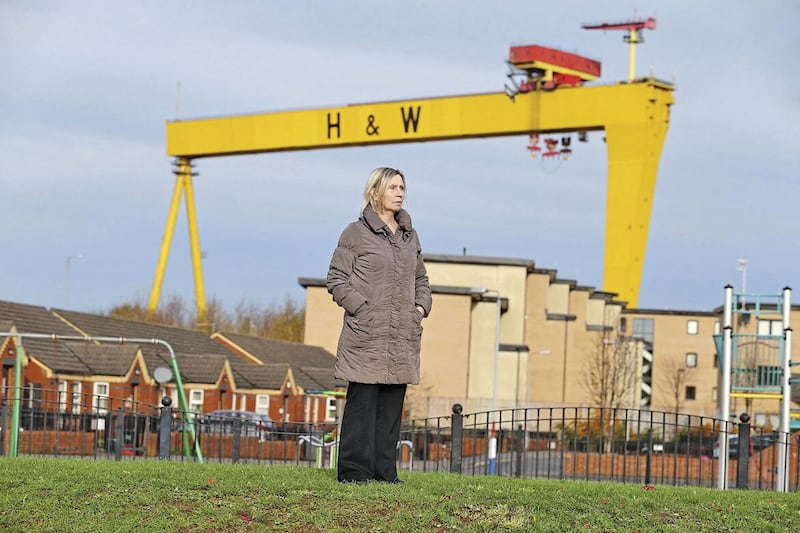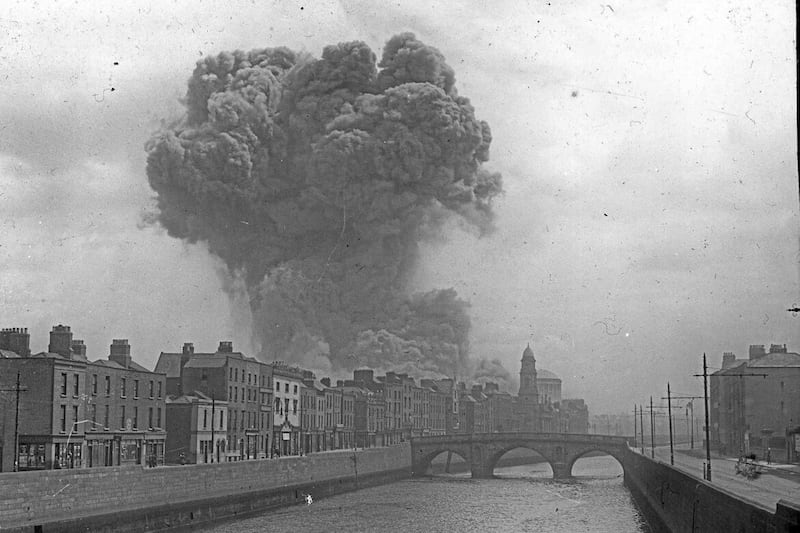Peter Howson first emerged during the mid-1980s as part of the 'New Glasgow Boys' art movement. Fresh from the Glasgow School of Art they included a collection of lauded figurative artists that would soon gain international recognition.
Howson is now the subject of a new book and major retrospective at Edinburgh City Art Centre, When the Apple Ripens: Peter Howson at 65, which launches next month.
Soon the public will be able to explore Howson's work in one single exhibition over four floors; the collection has been sourced from private and public collections and galleries around the world. It will feature over 100 works, some new and others which have never been viewed in public until now.
I was invited to his studio south of the River Clyde where he discussed his storied career, key influences, a friendship with David Bowie and the inspiration of faith in his work.
Howson describes himself as an "anti-sectarian" artist and his work has addressed many aspects of Glasgow life. A previous exhibition, Famine, was inspired by the horrors of the Great Hunger. "It's a subject that fascinated me and I wanted to do it," he says.
"The problems go back a lot further and I'm quite interested in how it affects people."

Paintings sold from that exhibition were donated to St Mary's in the Calton area of Glasgow, the spiritual home of Celtic Football Club. Howson also painted Celtic's founder Brother Walfrid as well as players such as Henrik Larsson and Roy Keane. Of the latter, he says: "I struggled with that painting; I didn't meet him I just used photographs and I hate doing that so it was a struggle but I think he liked it; I think he might have bought it."
Howson's relationship with both Catholicism and the Church of Scotland had a potent impact on both cultures. The Catholic Church commissioned him to paint St John Ogilvie in 2008 and the artist also befriended Church of Scotland minister and former moderator John Miller, who he describes as one of his best friends. "He's just finished a book about me," says Howson. "It's taken him five years and is coming out in the next year.
"I'm not Protestant or Catholic but I am a member of the Church of Scotland. Glasgow is a very strange and wonderful place, there's a lot of love and kindness but there's all this sectarianism as well."
Howson's religious paintings often depict suffering and darker subject matter but are never without a sense of hope.
"A lot of intellectuals or people who think they are intellectuals don't like my art," he explains. "Something is missing in their lives; they don't get it. The work affects people, it stirs something up.
"When I go down to my gallery in London a lot of people think they are a cut above; they don't want to confront this stuff, they think it's below them."
Although born in England and raised in Scotland he describes himself as a "northern European". I ask him what first inspired his use of the tattered union flag, which he often depicts on wild, shaven-headed men in mobs.
"I had a friend in art college, we were interested in the same things," he says. "We used to go 'Ned watching' at England football games when they were playing Scotland at Hampden. There was always trouble. We used to go and get a thrill from watching these people and even though it was bad and kind of violent, there was an energy."

Howson has depicted Glasgow in myriad ways. His painting Trongate is symbolic of a primary concern; working-class masculinity. The male portrayed is a giant in the classic boxer stance with a shaved head and vest, but despite that there is a sympathetic and vulnerable quality to the figure.
"It must be why so many prisoners write to me," he tells me. "The work gives them a bit of hope. I've been close to people like that and on the edge.
"I've had a lot of letters from people that have suffered such as ex-soldiers. The work has helped them tremendously with combat stress; they see the hope and get a kick out of it.
"School kids also love it as well. I don't know if it's still as popular with them but the war stuff was back in 1994/95.
"I think the trigger warning encouraged more school kids to go, I got a lot of letters from them as well. I'm thrilled about how the work affects people."
When Howson undertook a commission from the Imperial War Museum it would lead to a life-changing shift both personally and professionally. The work was controversial but it would bring the artist international acclaim.
At the same time, Howson was left deeply troubled by what he had witnessed. "During the Bosnian conflict, next-door neighbours were fighting against each other; the whole society had completely broken down," he says.
His appointment as British war artist for Bosnia led to an exhibition at the IWM in 1994. One of Howson's most shocking paintings, Croatian and Muslim, was bought by David Bowie.
"Yes, we were on very friendly terms for a while and he was an admirer of my work," says Howson.
"We met up every now and then for about three years but after that, we lost touch completely. I asked him to pose for me and we got on very well.
"I liked him a lot and found him refreshing as a person but it was a bit of a weird experience because he had always been a hero of mine. We ended up having dinner in the Dorchester hotel with the Bosnian prime minister, the president of Sony Records and the president of Amnesty International in a private suite with tons of special branch and Bowie's bodyguards.
"He had a show in Cork Street – you couldn't even get near it, the road was shut off because there were so many people.
"I remember thinking, 'I wish I had that amount of people interested in my work', at the time because it was Bowie that brought interest. I pressed my dealer to take him on because he was looking for a gallery but it never happened."
When the Apple Ripens: Peter Howson at 65: A Retrospective opens on May 27 and runs to October 1 at Edinburgh City Art Centre. A new book will accompany the exhibition, published by Sansom and Co.









